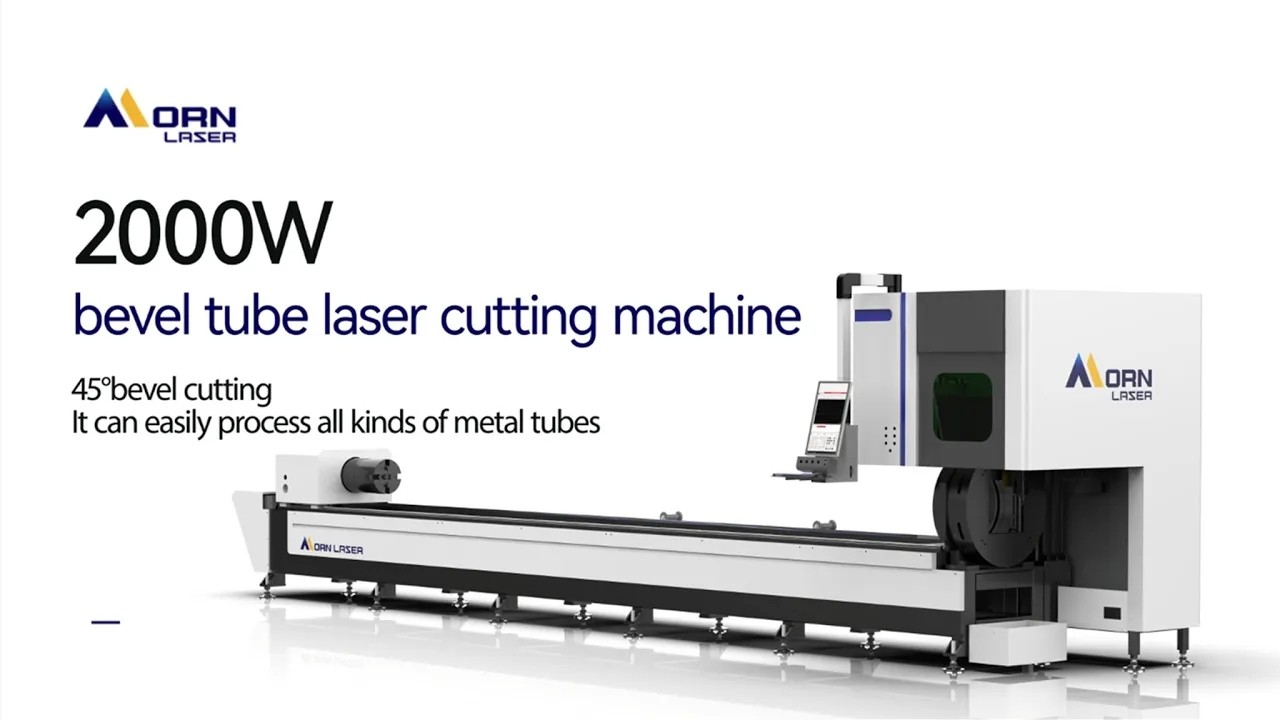-
Product
-
Fiber laser cutting machine
-
Profile Steel/ H-Beam Laser Cutter
high efficiency | high-performance | high quality -
Full Cover Fiber Laser Cutting Machine
supreme configuration | high precision | safe & pollution-free -
Sheet fiber laser cutting machine
tailor-made machine | efficiency boost -
Fiber Laser Bevel Cutting Machine
one-shot bevel | efficiency boost | streamlined process -
High precision fiber laser cutting machine
High precision | small footprint | fully enclosed -
Four-chuck Tube Cutting Lasers
truly zero-tailing | low cost per part | auto loader -
Three-chuck Tube Laser Cutting Machine
top production output | low cost per part | extremely short tailing -
Two-chuck Tube Laser Cutting Machine
top production output | low cost per part | extremely short tailing -
Full Enclosed Fiber Laser Cutting Machine
Integrated design saves installation time and shipping costs. - flexible processing | continuous cutting | efficient production
-
Fully Automatic Loading & Unloading Laser Cutting Production Line
intelligent production | optimizing factory space | reduce labor costs -
Sheet and Tube Fiber Laser Cutting Machine
supreme cost-effectiveness | dual-use laser | space-saving
-
-
Fiber laser welding machine
-
Air-cooled Portable Laser Welding Machine
more flexibility | easy to use | cost effective -
Automatic laser welding machine
fine welding seam | boosted efficiency -
Integrated fiber laser welding machine
instant welding | easy to operate & move -
Handheld fiber laser welding machine
long distance welding | multi-welding modes
-
- Fiber laser cleaning machine
- Bending Machine
-
Fiber laser cutting machine
- Solutions
- Why Morn Laser
- Price
- Contact
- VR
Menu
X- home
-
Product >
-
How to Choose a Fiber Laser Cutting Machine on a Budget
2024-11-14In modern manufacturing, fiber laser cutting machines are highly valued for their efficiency, precision, and versatility. However, for many businesses—especially small and medium-sized enterprises—buying the right machine within a limited budget can be a real challenge.
This guide offers practical, budget-friendly tips to help you find a laser cutter that fits both your technical needs and your financial plan.
1. Set and Manage Your Budget
Set a Total Budget
Before anything else, define your total budget. This should include not only the machine price but also installation, shipping, training, and initial maintenance costs.
Plan for Contingencies
It's wise to reserve a portion of your budget for unexpected costs, such as component upgrades or replacement parts. A 10–15% buffer is generally recommended.
Evaluate Long-Term Value
A lower upfront price may lead to higher long-term costs. Consider:
Operating expenses (power consumption, assist gas)
Cost of consumables (nozzles, lenses)
Expected maintenance frequency and part replacement
Potential production gains and labor savings
Make sure the machine delivers a reasonable Return on Investment (ROI) over time.
2. Choose the Right Laser Power
Understand Your Cutting Requirements
Ask yourself:
What materials will you be cutting (carbon steel, stainless steel, aluminum, etc.)?
What is the maximum material thickness?
These answers will guide your power selection.
Laser Power Recommendations
Entry-Level (≤1mm materials): Consider a 500W fiber laser cutter.
Mid-Range (1–5mm materials): A 1000W machine is suitable.
Heavy-Duty (5mm+ materials): Go for 2000W or more for efficient cutting.
Note: Don’t over-invest in high power if your application doesn’t require it. Energy usage and machine cost both increase with power.
3. Focus on Equipment Performance and Quality
Precision Needs
If your production demands tight tolerances and clean edges, look for machines equipped with high-precision cutting heads, linear motors, and stable motion control systems.
For general fabrication, standard precision models will suffice and help save costs.
Stability and Build Quality
Choose machines with a rigid bed frame (e.g., cast iron or welded steel) for long-term stability.
Opt for brands known for mechanical quality and control software reliability.
Check the Brand Reputation
Well-known brands often provide better long-term value.
Read customer reviews and request references if available.
4. Consider After-Sales Support and Training
Understand the Warranty
Warranty Period: Confirm the duration—typically ranges from 1 to 3 years.
What’s Covered: Clarify whether key components like the laser source, cutting head, and control system are included.
Check Support Availability
Ensure the supplier provides remote support, spare parts, and local service engineers.
Ask if they offer training for operators and maintenance technicians—this can save time and prevent costly mistakes.
5. Compare Quotes from Multiple Suppliers
Request Multiple Quotes
Reach out to at least 3–5 suppliers for quotations.
Compare not just the price, but also what’s included (software, service, consumables, delivery).
Request Live Demos or Factory Visits
If possible, visit the supplier’s factory or showroom to inspect machine build quality and actual performance.
Request a demo using your materials to test results.
Learn from Other Buyers
Ask for case studies, user stories, or customer references for similar industry applications.
Get insights from peers or forums in your industry for real-world feedback.
Conclusion
Choosing a fiber laser cutting machine on a budget doesn’t mean compromising on quality or performance. By:
Defining a clear budget
Choosing the right laser power
Focusing on machine reliability and after-sales support
Comparing multiple options
you can make a smart investment that meets both your financial and operational needs.
Need help finding the right machine for your workshop?
Contact Morn Laser today—we’re here to help you succeed with reliable machines and expert support.
- Office Address:
- 17F, Building 5, Qisheng Mansion High-Tech Zone, Jinan, Shandong 250101, China
- Email: info@mornlaser.com
- Mobile/WhatsApp/WeChat: +86 151 6916 6350
CONTACT USCopyright © 2008-2022 Morn Laser All Rights Reserved.![]() Get a Quote
Get a Quote
![]() Get a Quote
Get a Quote
Cookies
We use cookies to improve our services and remember your choice for future visits. By clicking "Accept cookies", you consent to the use of cookies on this website.
Read our Privacy Policy
Get a Quote x
![]()








